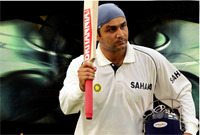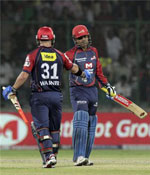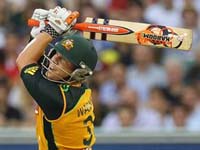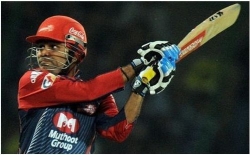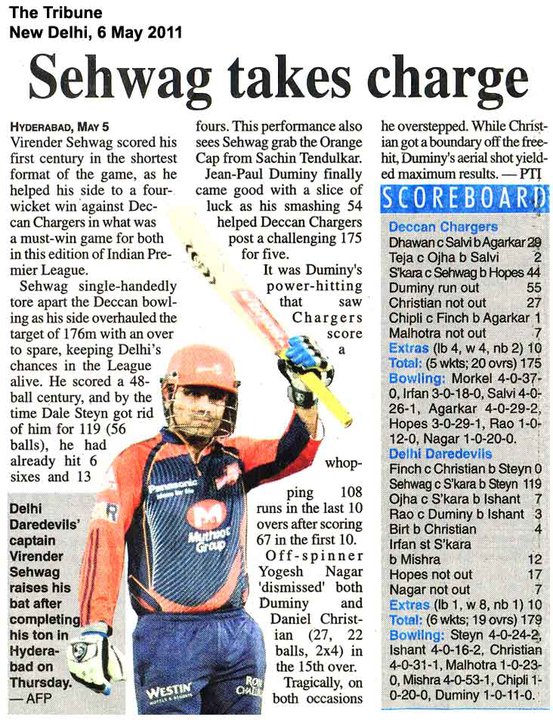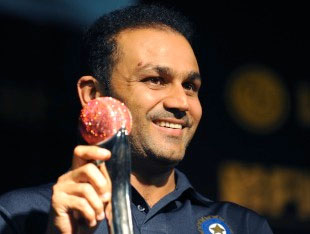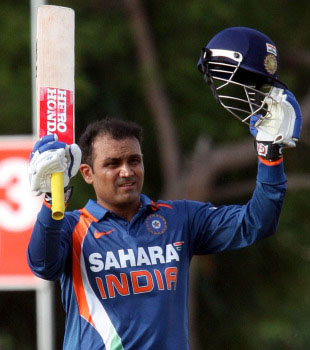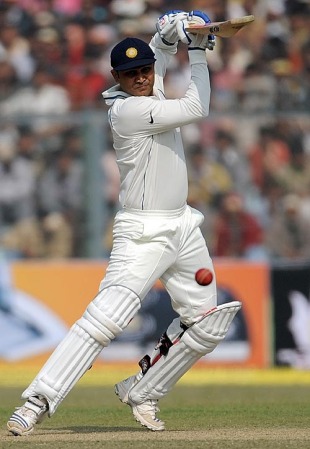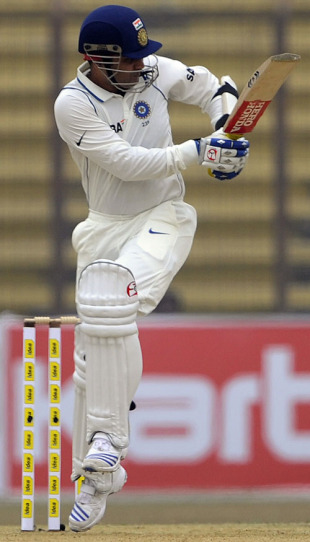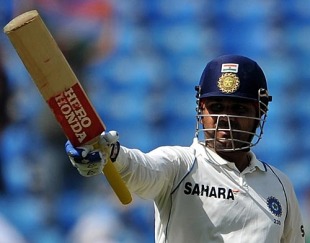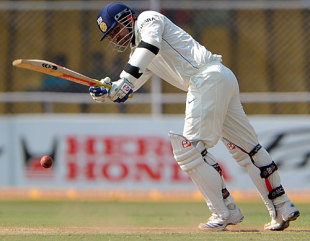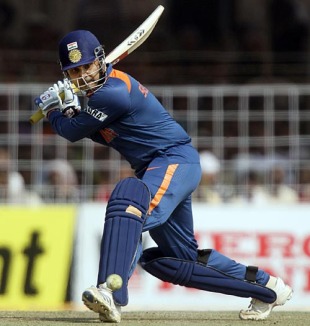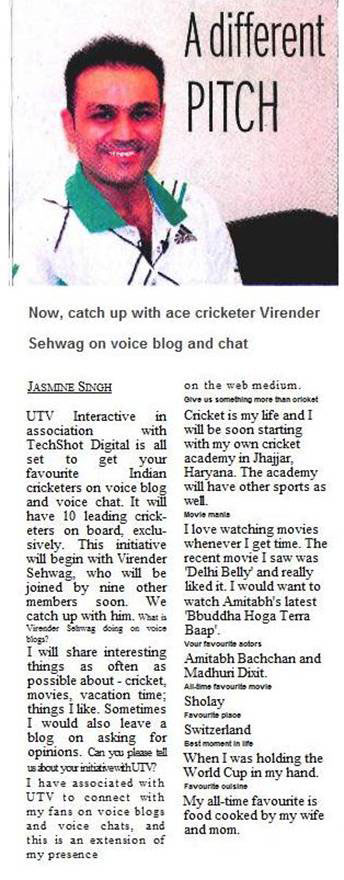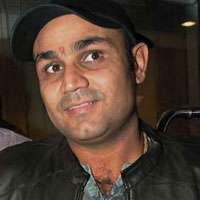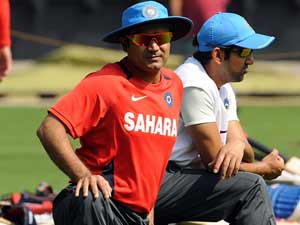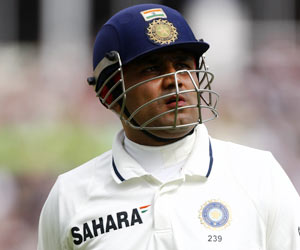Vintage Sehwag revives old memories
A small component in Kings XI's new designs, Virender Sehwag turned the clock back and surprised one and all by playing a big hand to take the team into its first IPL final read more
Gavaskar says Yuvraj and Sehwag down but not out
Virender Sehwag and Yuvraj Singh have had difficult domestic seasons after being sidelined from the national team, and with the flourishing of a younger bunch of batsmen, their international future looks shaky. Sunil Gavaskar, though, has said both can still force their way back into the Indian team.. read more
Delhi dominate, Sehwag strikes form
Virender Sehwag showed glimpses of his shot-making prowess for an hour and 49 minutes as Delhi's batsmen read more
Sehwag motivates Team India from sidelines, on Twitter
He may not be in action with the bat on the field but Indian opener Virender Sehwag is making sure that he keeps the team's morale high in England.read more
'Cricket made me Viru'
Virender Sehwag is fit and raring to join Team India in England. The swashbuckling all-rounder is the only batsmen in the world to score two triple centuries and take five wickets in an innings.read more
A different Pitch
Now, catch up with ace cricketer Virender Sehwag on voice blog and chatread more
J K Cement signs on Ace Cricketer Virender Sehwag as its Brand Ambassador
Sehwag is acknowledged as one of the best cricketers both in India and overseas as he has been instrumental in keeping the Indian team atthe pinnacle of world cricke read more
Sehwag backs Warner in longer forms
David Warner has revealed that Indian opener Virender Sehwag helped give him the confidence to really push on in first-class cricket.
Despite having turned out for Australia in ODIs and T20 Internationals, Warner has limited domestic four-day experience, having made his international bow before playing a first-class match. read more
David Warner attributes his improved first-class form to Virender Sehwag
The Australia batsman, David Warner revealed on Saturday, that it was swashbuckling India opener, Virender Sehwag, his skipper at Delhi Daredevils in the Indian Premier League, who told him that he could be a good player in the longer format of the game rather than a Twenty20 player.
"He [Sehwag] told me two years ago he saw me as a better four-day player than Twenty20 player,'' said Warner while talking to a leading Australian sports journal. read more
Virender Sehwag answers your questions
India's Virender Sehwag took time out of his schedule this week to answer questions from the ICC's Facebook and Twitter followers.
He spoke on a variety of topics including his approach to batting, his take on batting records and his illustrious teammate Sachin Tendulkar. read more
Virender Sehwag scores fastest triple century
His stroke play has finally impressed those in the corridors of power. Nagafgarh Ka Tendulkar Virender Sehwag has been awarded the Padma Shri Award by the Government of India. He along with badminton ace Saina Nehwal have been chosen for the sports category. Padma Shri is the fourth highest civilian award after Bharat Ratna, Padma Vibhushan and Padma Bhushan.
The explosive Delhi opener has to be one of the most deserving cricketers to win the award. Although regarded as a better ODI batsman, it is his performance in the Test matches that has contributed to India becoming the No.1 side in Test cricket. read more
Virender Sehwag gets Padma Shri
Virender Sehwag has been appointed captain of the Delhi Daredevils for the 2011 edition of the Indian Premier League. Sehwag previously led Delhi in the 2008 and 2009 IPL seasons, before handing over the leadership role to Gautam Gambhir
"For us Virender Sehwag stands for the Delhi Daredevils credo of "Khelo Front Foot Pe," said Mr. Srinivas Bommidala, Chairman of GMR Sports." read more
Cricket's Modern Zen Master
Virender Sehwag, who has just hit yet another fast-forward century in the Test being played against New Zealand in Ahmedabad, is the most interesting cricketer in the world today. He is at once a genius, set apart from his peers by his extraordinary gifts, and a player who embodies the changing history of the game he plays. read more
Beware of Sehwag 2.0
To intimidate people, Al Pacino's character in Scarface made them "say hello to my little friend". Somehow six other words from Virender Sehwag, which sound completely non-violent by his standards, are having similar impact in the cricketing world. read more
Viru gives an amazing start to India's World Cup campaign
"Virender Sehwag unleashed a stunning display of strokeplay to smash a blistering 175 as India launched their cricket World Cup campaign with an emphatic 87-run victory over Bangladesh." read more
Sehwag is Test Cricketer of the Year
VirenderSehwag has been named the Test Player of the Year during the 2010 ICC Awards ceremony in Bangalore. He won the award, the first of his career, ahead of Sachin Tendulkar, Dale Steyn and HashimAmla. read more
Sehwag soars solo again
VirenderSehwag is the only batsman to adapt to the bowler-friendly conditions in Dambulla, where 230 is worth 300. He had ground out a watchful - by his standards - match-winning 99 against Sri Lanka. read more
The three S's of Sehwag
S is for Sehwag and also for scintillating stroke-play, the perfect description for how he goes about his business. However, you can add another S - for smart. He is up there with Bradman in his ability to score quickly for prolonged periods of time. read more
Sehwag named Wisden's Leading Cricketer
Several strong candidates advanced their case to be the Leading Cricketer in the World in 2009. None, however, made such an impact as to displace the incumbent, VirenderSehwag India's 31-year-old opening batsman, who extended the sport's traditional boundaries further still. read more
Sehwag reaches No.1 in Test rankings
VirenderSehwag has taken the No. 1 spot in the ICC Test rankings after hitting successive centuries against South Africa.
With a rapid 165 in the Kolkata Test, which India won to stay top of the ICC rankings for teams, and 109 in Nagpur before that, Sehwag has displaced good friend and fellow Test opener GautamGambhir.read more
The new Bradman
Like the Don, Sehwag bats with an uncluttered mind, has made over 290 three times in Tests, and has the best strike rate among high scorers of his generation
Sehwag has often said he doesn't think too much when he's batting. A wise man. After years of speculation about what, apart from his enormous skill, made Sir Donald Bradmann so great, I've come to the conclusion that a crucial attribute was his ability to bat with an uncluttered mind.read more
'My best knock' – Sehwag
VirenderSehwagg is arguably the only player in the world who will score a 102-ball 142 and then put his money on the opposition for superstitious reasons. Yet even there he was a winner, his knock propelled India to an ultimately unreachable score. read more
Virender Sehwag wants to be a Delhi Daredevil forever
Seasoned Delhi batsman Virender Sehwag says he is working hard to earn a recall to the Indian cricket team and is excited about the prospect of opening with teammate Gautam Gambhir once again. read more
Sehwag takes charge
Delhi Daredevil's captain Virender Sehwag raises his bat after completing his ton in Hyderabad on Thursday. read more
Sehwag unleashes the beast within
It has taken him five matches but Virender Sehwag finally came up with his first potentially 'game-defining' knock in IPL 4 against Kings XI Punjab.
It has taken him five matches but Virender Sehwag finally came up with his first potentially 'game-defining' knock in IPL 4. read more
Sehwag named Delhi Daredevils captain
Virender Sehwag has been appointed captain of the Delhi Daredevils for the 2011 edition of the Indian Premier League. Sehwag previously led Delhi in the 2008 and 2009 IPL seasons, before handing over the leadership role to Gautam Gambhir, to concentrate on his batting. read more
Virender Sehwag retained by Delhi Daredevils
New Delhi: Virender Sehwag, the world's most dashing batsman, has once again signed up with the Delhi Daredevils on the eve of the IPL-4. Sehwag has been a mainstay for the Delhi Daredevils for the past three seasons, and is the only currently active player to have two Test triple centuries to his name. read more
Virender Sehwag to captain Delhi Daredevils in IPL-4
NEW DELHI: Virender Sehwag will lead the Delhi Daredevils in the fourth edition of the Indian Premier League. The 32-year-old Delhi opener, a proven match-winner, has been a part of the Delhi Daredevils since its inception in 2008. read more


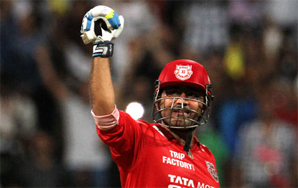 absolutely all of them, had the same text on their backs - 32, Maxwell. Inside the ground, Maxwell treated the crowd to some big shots from the practice pitch before the toss. When Kings XI Punjab were asked to bat, they all let out a shriek of excitement for Maxwell. However, by the end of the first innings, Maxwell's reds - and the rest - had been reminded of something far closer to their hearts: Virender Sehwag.
absolutely all of them, had the same text on their backs - 32, Maxwell. Inside the ground, Maxwell treated the crowd to some big shots from the practice pitch before the toss. When Kings XI Punjab were asked to bat, they all let out a shriek of excitement for Maxwell. However, by the end of the first innings, Maxwell's reds - and the rest - had been reminded of something far closer to their hearts: Virender Sehwag.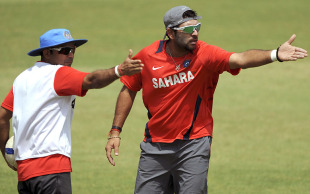 Yuvraj has been through similarly wretched form, troubled by the pace of Mitchell Johnson during the home ODI series against Australia last year, before extending his lean run in the matches against West Indies and South Africa. The runs haven't returned in three Ranji matches since either.
Yuvraj has been through similarly wretched form, troubled by the pace of Mitchell Johnson during the home ODI series against Australia last year, before extending his lean run in the matches against West Indies and South Africa. The runs haven't returned in three Ranji matches since either.

